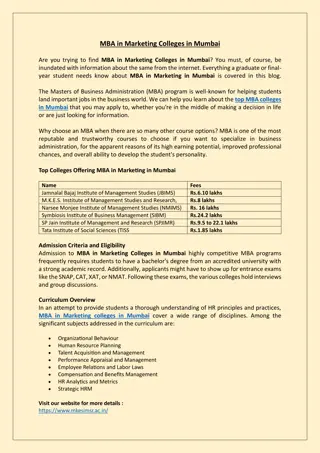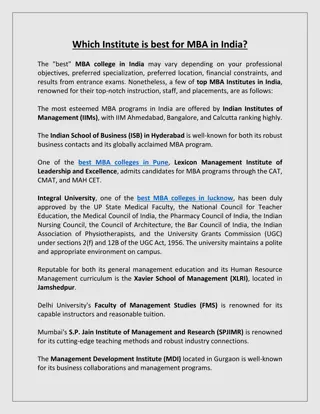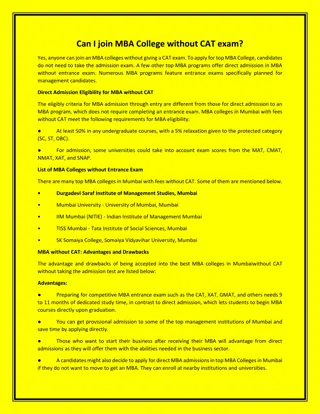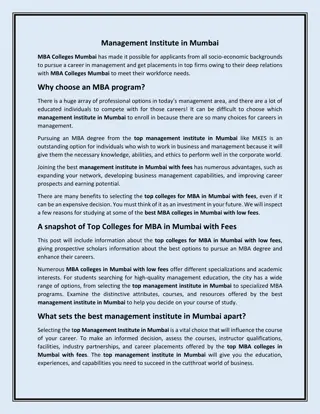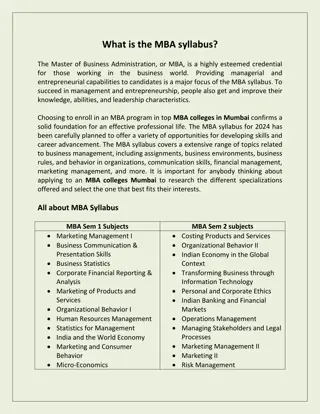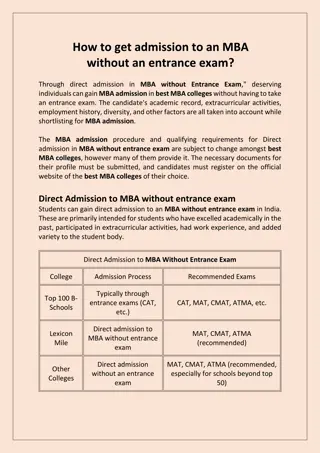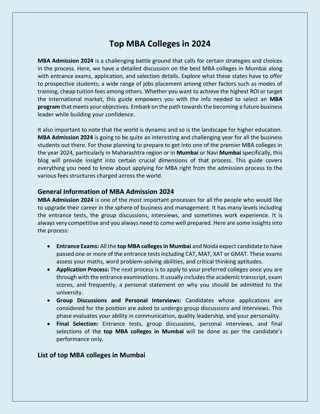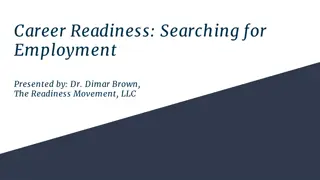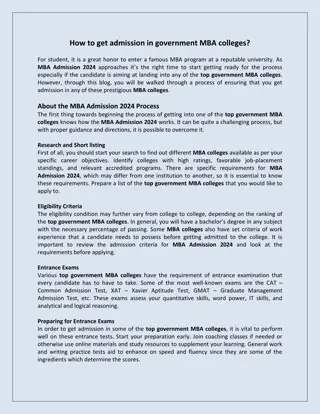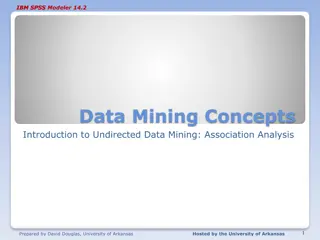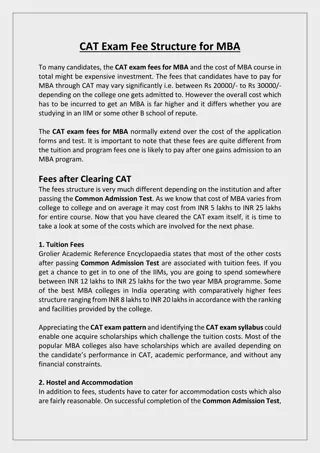Small Business Job Creation Analysis - MBA Student Project Presentation
This presentation delves into the analysis of small business job creation, showcasing metrics, project processes, and communication strategies. Through the study of leading, lagging, and but-for metrics, the project aims to standardize measurements and convey key findings to stakeholders. Utilizing real-world examples and case studies, the project highlights the importance of defining metrics, setting targets, measuring progress, and reporting performance to achieve sustainable growth in small business sectors.
Download Presentation

Please find below an Image/Link to download the presentation.
The content on the website is provided AS IS for your information and personal use only. It may not be sold, licensed, or shared on other websites without obtaining consent from the author.If you encounter any issues during the download, it is possible that the publisher has removed the file from their server.
You are allowed to download the files provided on this website for personal or commercial use, subject to the condition that they are used lawfully. All files are the property of their respective owners.
The content on the website is provided AS IS for your information and personal use only. It may not be sold, licensed, or shared on other websites without obtaining consent from the author.
E N D
Presentation Transcript
INEAP Metrics Report Small Business Job Creation Analysis April 25, 2012 MBA Student Project Presentation
Agenda Goal: Illustrate your Job Creation Story Project Overview Define Metrics Communicate with Metrics Standardize Metrics Composite Index
Metrics Illustrate Your Story Audience Message Congressional and Agency Oversight Communicate Mission Success Agencies and Programs Share Successful Programs and Implementation Approaches Attract Businesses to Agency Programs Small Businesses
Project Process Identified Agency Programs Reviewed PARS, Agency Websites, GAO Reports, US Code Cataloged Programs and Metrics Analyzed Metrics Standard Metrics Leading, Lagging, and But for Reviewed Industry Best Practices Generated Final Report Identified Strengths, Weaknesses, and Opportunities of the Current Usage of Metrics Dictionary of Terms
Defining Metrics Leading Lagging But-for
Communicate Metrics Develop Targets Measure Progress Report Performance Explain Missed Targets Report Lessons Learned
Communicate Metrics (Example) One Department uses the following measures to gauge the performance of programs: Performance Measure (Program Name) Target Actual Status 90% 73% Not Met Measure 1 (Dollars awarded to SME programs) Measure 2 (Jobs created/retained) 95% 100% Met Measure 3 (Number of new job opportunities created) $1.10 B $1.40 B Exceeded FY 2012 Missed Targets Measure 1 (Dollars awarded to SME programs) Measure Department missed this target because overall SME*programs increased in number disproportionally to the amount of funding available. Petition for more funding. Explanation Action *SME: Small and Medium Enterprise
Santa Monica Sustainable City Plan Step 1: Set Goals Significantly decrease overall community consumption, specifically the consumption of non-local, non-renewable, non-recyclable and non-recycled materials, water, energy and fuels. Encourage the use of local, non-polluting, renewable and recycled resources Step 2: Select Leading Metrics Step 3: Measure Data in Real-time Step 4: Interpret Data to Make Adjustments Water use leading metrics Goals/Targets Reduce overall water use by 20%. Total citywide use (also reports per capita and by sector) Increase percentage of locally-obtained potable water to 70% of total. Percent local vs. imported Potable vs. non-potable Of the total water used, non-potable water use should be maximized.
Standardize Metrics Awards Partnership Research Advocacy Grants Loans Subsidies Infrastructure Contract Award Financial Assistance Advising Training Counseling Hiring Information Education Technical Assistance
Benefits of Standardization Cross Evaluation Continuous Improvement Greater Impact Strengthens the Metrics Base Evaluation Stronger Connections Standardization Improve Greater Impact
An Opportunity: Composite Index What is a Composite Index? Why Composite Index? How to Construct a Composite Index? Where to Begin?
In Summary Choose Metrics that Illustrate Your Story Solidify Metric Definitions Use Clear Goals, Metrics, and Targets to Communicate your Efforts Standardize Metrics Across Job Creation Efforts Develop a Composite Index to Enhance your Credibility
Kogod MBA Participants MBA Course Participants Raashi Binjrajka Lee Brindel Andres Bu Soto Matthew Cunningham Anthony Frazier Jeffrey Harnois Sam Hedlund Ralph Kirkpatrick Adrian Montgomery Tyler Weymouth For more Information Please Contact: Robert Sicina Kogod School of Business Office 223 (202) 885-1858 bsicina@american.edu Mark Clark Kogod School of Business Office 31 (202) 885-1873 mark.clark@american.edu Course Instructors William Bailey Alexander Bant Dr. Mark Clark Robert Sicina



